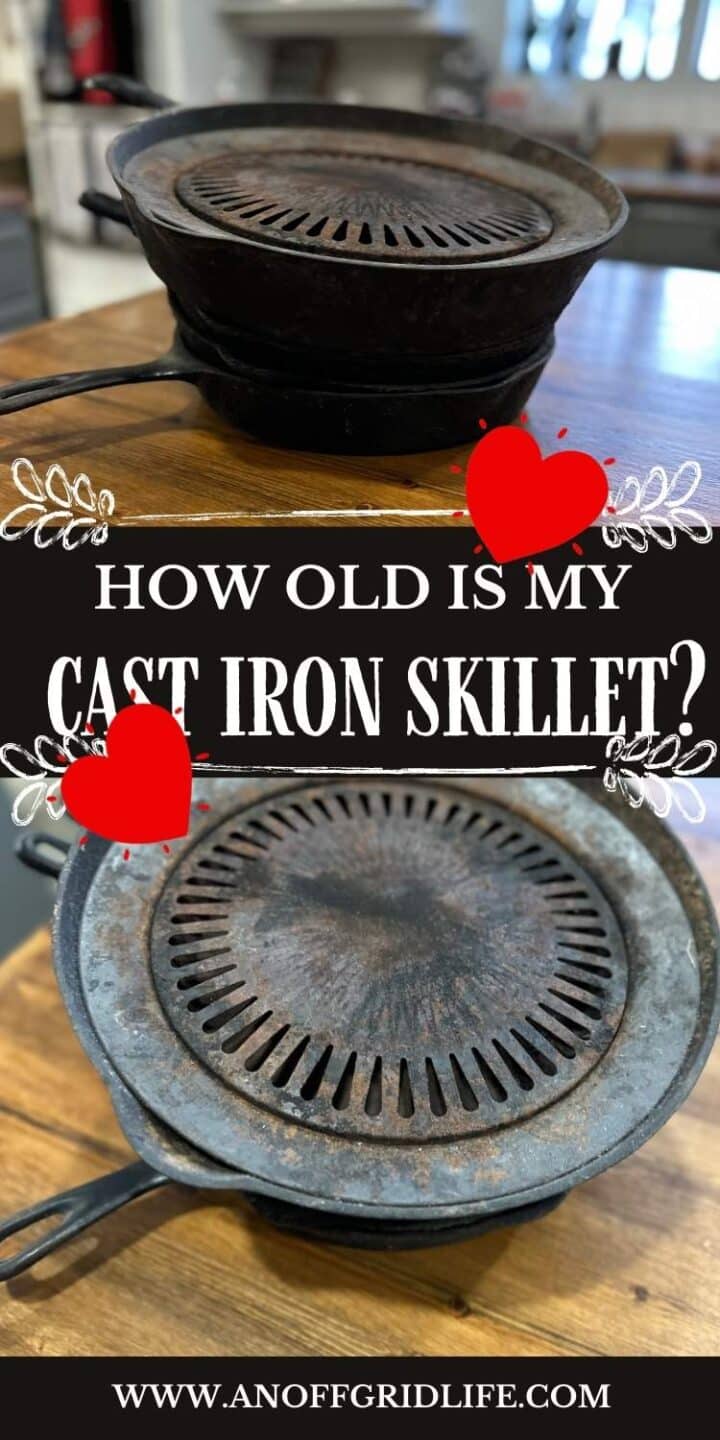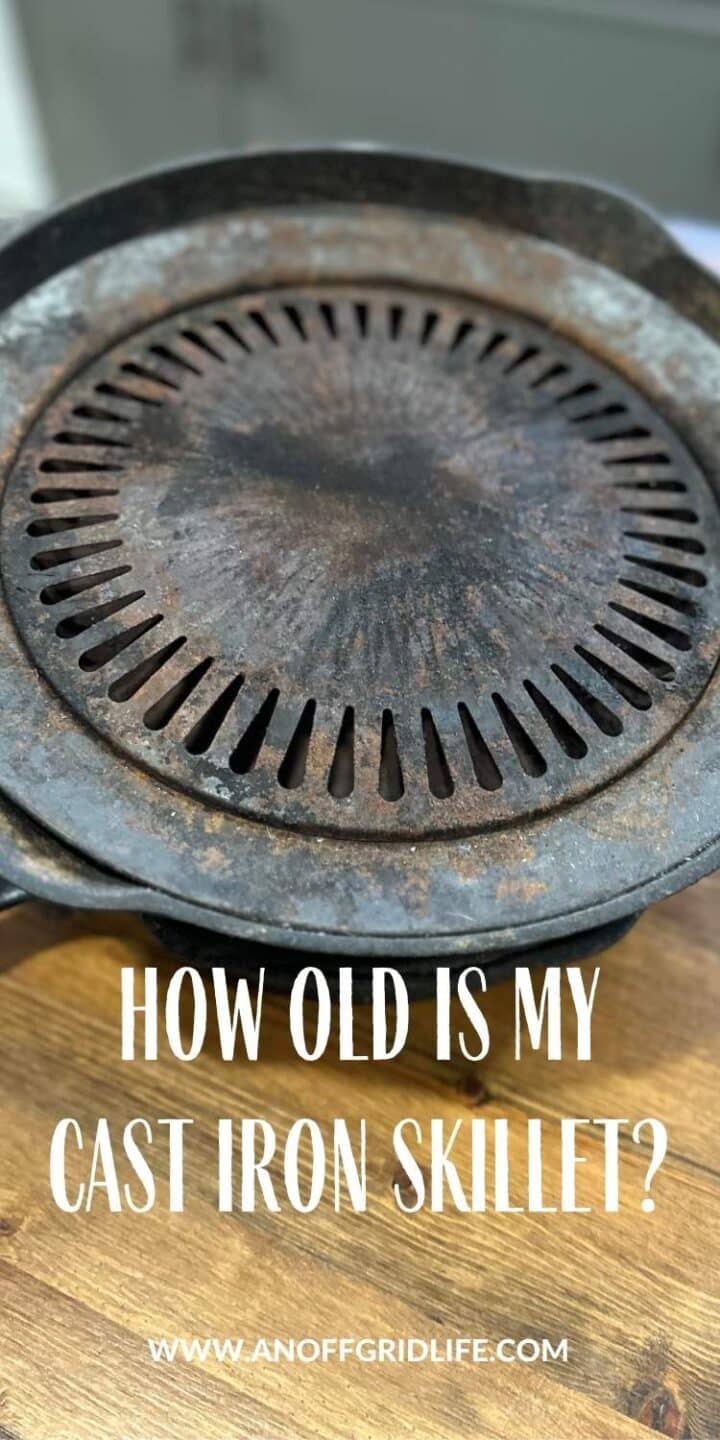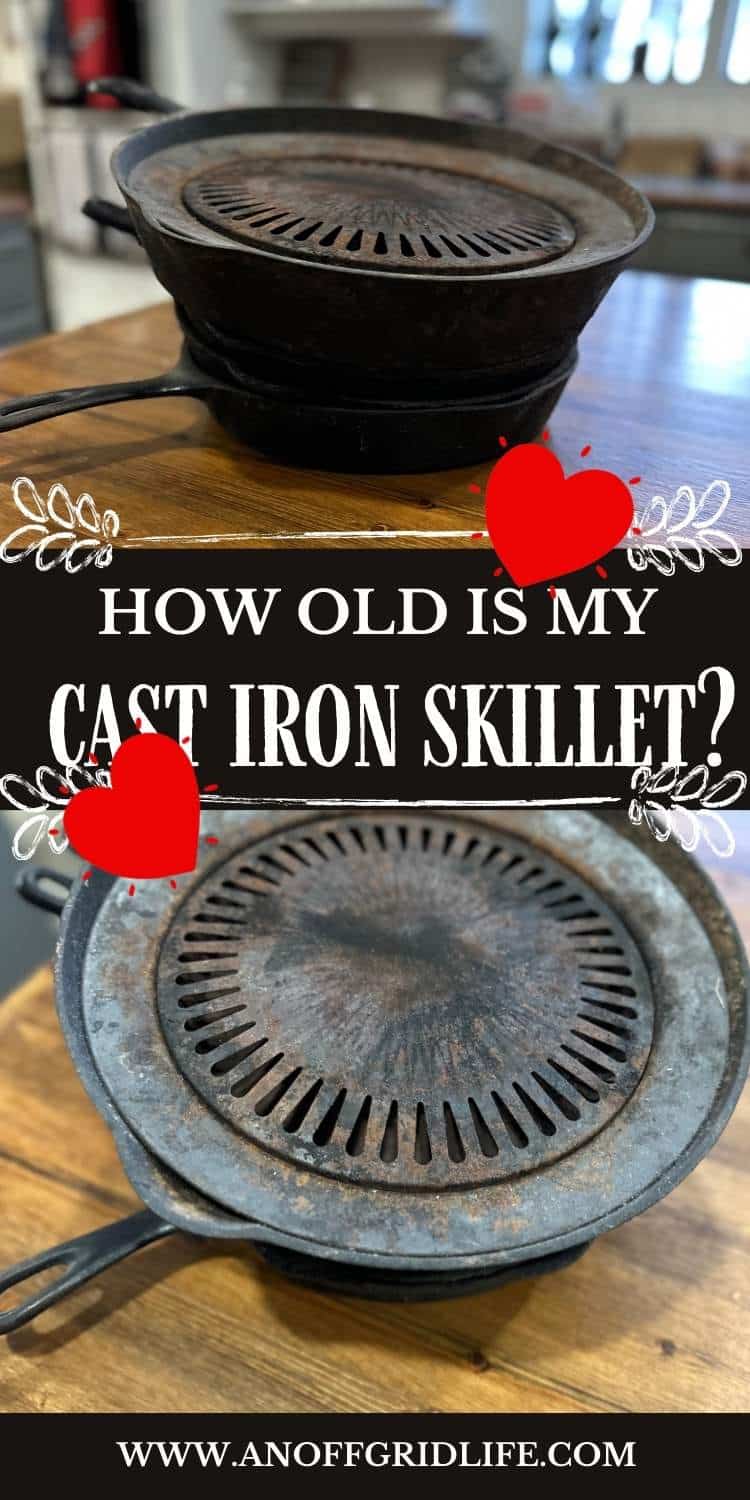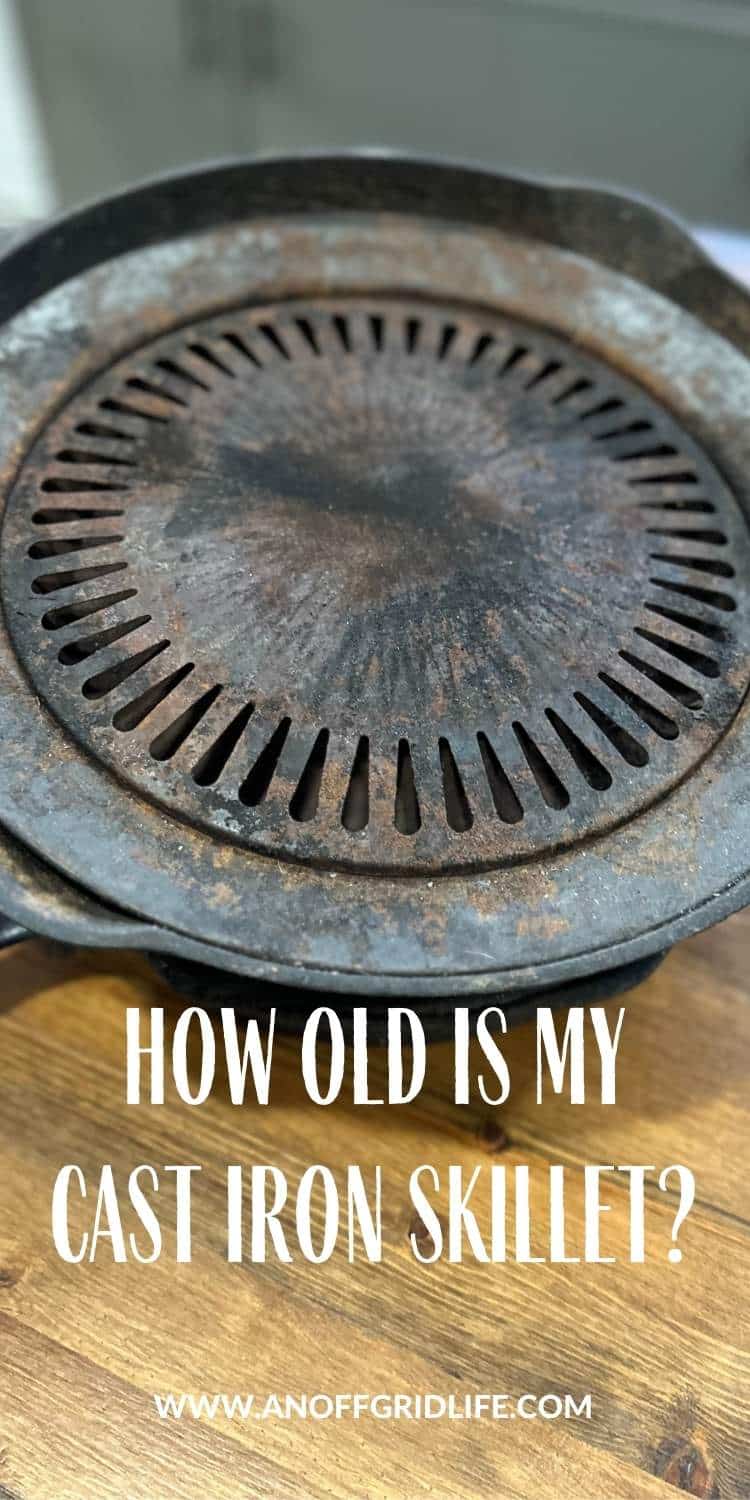Every time I make pancakes or bacon in our old pan, I wonder how old is my cast iron skillet? I think about each scuff and scratch and what they might tell me of hearty meals past.
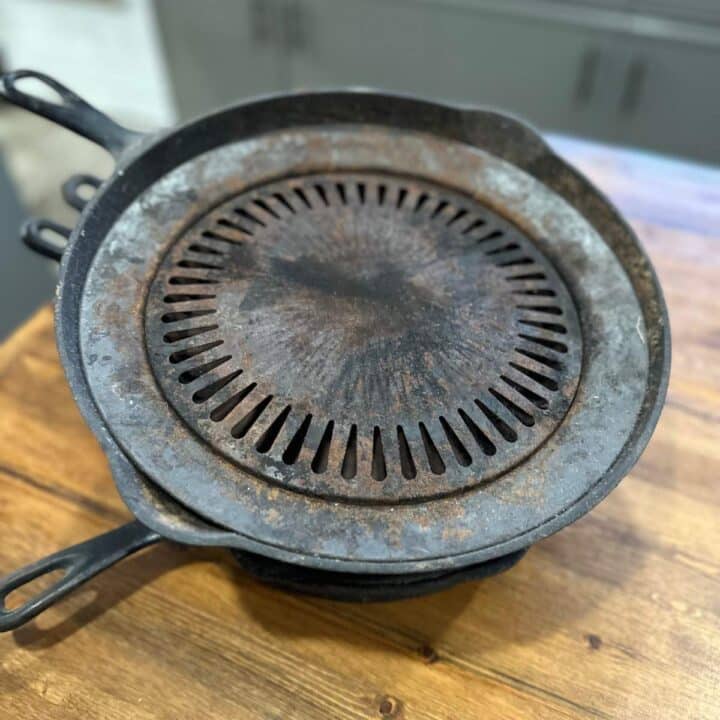
It's true. Old cast iron holds many secrets: a pattern number hinting at its birth era or a faint manufacturer logo revealing its lineage. When you learn how to decode those cryptic signs, you'll get a better idea of the age of your cast-iron cookware.
Deciphering the Age of Your Cast Iron Skillet
Have you ever picked up a cast iron skillet at a yard sale or been given one by your grandparents? If so, it's possible that you now own an antique kitchen item. And determining the age of your cast-iron pan can turn an everyday cooking tool into a valuable collectible.
Since we cook on a propane cooktop or our wood stove, we appreciate the strength and durability of cast iron kitchen items.
Some items came from estate sales, and others from our parents or grandparents in southern and northern Ontario. If you're serious about outfitting your homestead kitchen long-term, you'll want to invest in old, quality cast iron skillets. Learn how to clean them up and season cast iron, and you'll be able to use them for years.
We have an extensive cast iron collection in our home that we've collected over many years. They're durable, stand up to extremely high heat, and I think they give my homestead recipes a unique flavor.
I've baked everything from bacon and eggs to pumpkin cinnamon rolls in my skillet. Recently, I even made sourdough English muffins in my cast iron skillet.
Examining Manufacturer's Marks and Logos
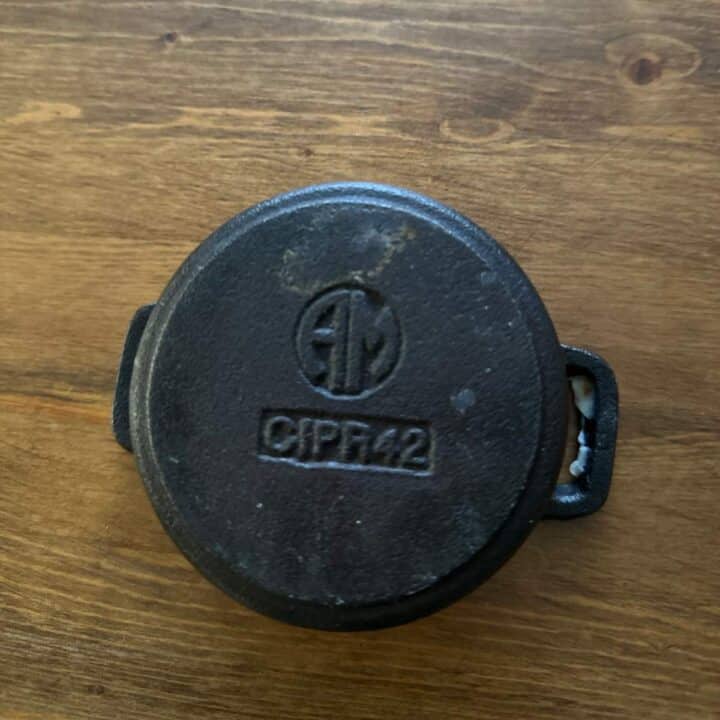
When you ask yourself, "How old is my cast iron?" one of your first answers could come from a mark or logo. Look for a manufacturer logo or mark on the bottom of your cast iron skillet or pan.
These emblems are like time stamps, revealing when and where your pan was born. For instance, if you see Griswold Cookware's small logo, that piece likely dates between 1939 and 1957.
However, other cast iron manufacturers are a little more subtle. For example, Lodge Cast Iron pieces won't always give up their age so quickly; they've been using almost the same simple notched design for many years.
Interpreting Numbers and Pattern Marks
Does your cast iron piece include a mysterious series of numbers? If so, they're more than just decoration. The size number usually tells us what diameter stove eye would fit best when the pan was first introduced. This is an important clue to "how old is my cast iron."
Modern stoves don't match up exactly anymore. And pattern letters or numbers often indicate which mold made them; manufacturers used these before computerized systems came around.
Tip: Cast iron Cookware longevity: Learn to carefully care for your cast iron. If taken care of properly, these pans could last over 150 years.
If your cast iron pan, pot or skillet lacks markings or logos, don't despair. Instead, look closer for things like heat rings or gate marks on unmarked pieces. For example, the Atlanta Stove Works produced pieces over a hundred years ago without any logos whatsoever. So, take a look at the bottom of the pan.
The Value and Collectibility of Vintage Cast Iron Skillets
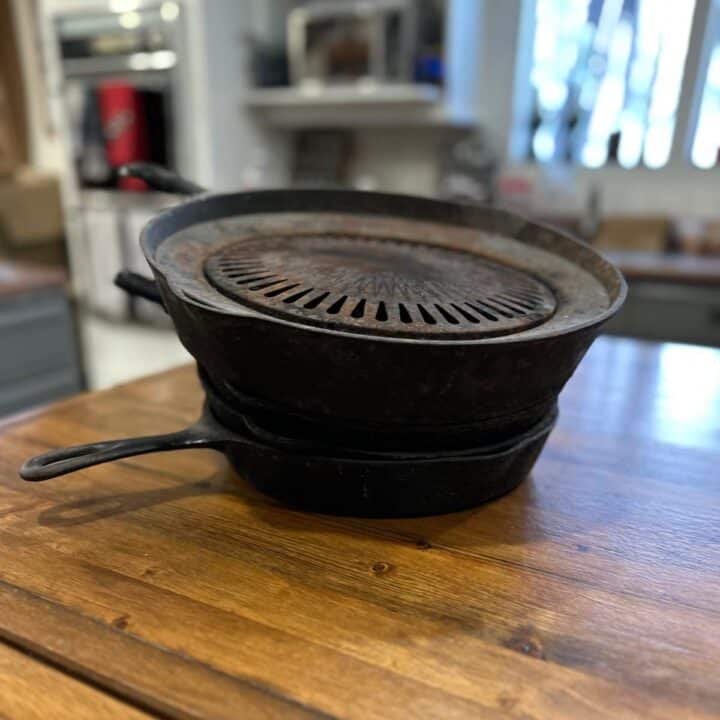
Cast iron pieces are more than simply durable cookware. Vintage cast iron cookware can add charm to your homestead kitchen, especially if you love farmhouse decor.
Think of your old cast iron pieces as culinary history that could have been part of countless family dinners or even historical events. In fact, collectible cast iron skillets often come with stories as rich as the flavors they help create.
Why do we love cast iron so much? For starters, when taken care of properly, these pans last many generations—some are over 150 years old.
Antique pieces from the early 1900s or earlier may start at prices similar to new ones but can soar up to $8,000 for rare finds. That's because seasoned collectors recognize the value in things like small logos from Atlanta Stove Works Wapak or the unique spider design on early Griswold pieces.
Secondly, finding an antique pan is almost like treasure hunting. You might get lucky at yard sales or flea markets where people don't realize what they've got.
When examining potential additions to your collection, pay attention to details like pattern numbers and heat rings hinting at their age and origin—a genuine thrill for any collector.
However, remember that the best way to care for these heirlooms involves more than just cooking or baking with them. It includes proper seasoning maintenance and sometimes full-on restoration projects. Yet restoration will ensure that your piece performs beautifully for years to come.
If done right, restoring old cast iron skillets and other cookware enhances its practical use in today's modern kitchens. And it also maintains or increases its price point among fellow enthusiasts who share your passion for vintage cast iron.
Identifying Fakes vs. Authentic Vintage Cast Iron Cookware
If you love cast iron as much as I do, spotting an authentic vintage cast iron skillet can be thrilling. But beware—there are fakes out there that look pretty convincing at first glance. Learn a few tips to help you tell the real deal from a clever imitation.
A successful cast iron hunt means knowing what's genuine and what's not. As mentioned above, an authentic antique piece will often have a manufacturer logo—a badge of authenticity —that dates back to pioneer times and early American companies known for their craftsmanship, such as Griswold or Wagner Ware.
Fake vintage cast iron pans might mimic these logos. So pay attention to the details: The quality of casting in old pans is usually superior. You'll find a smoother cooking surface compared to newer knock-offs.
And pay attention to the numbers engraved in the cast iron. They're not just random figures stamped onto skillets. Size number and pattern letters found on handles or bottoms often indicate pan type and specific molds used by manufacturers.
Examining Manufacturer's Marks and Logos
Size matters. A quick glimpse at marks and logos can reveal much about your skillet's origins. For example, the small logo versus large logo debate could signal different production eras within the same brand.
Interpreting Numbers and Pattern Marks
Digging deeper into history, deciphering pattern numbers alongside other markings tells us more than age. They also suggest value since collectors might pay thousands for rare finds. Remember, though, even unmarked pieces produced before 1957 hold significant worth. That's because this era marked changes in manufacturing processes that altered the feel—and soul—of these culinary workhorses.
Notable Manufacturers of Historic Cast Iron Cookware
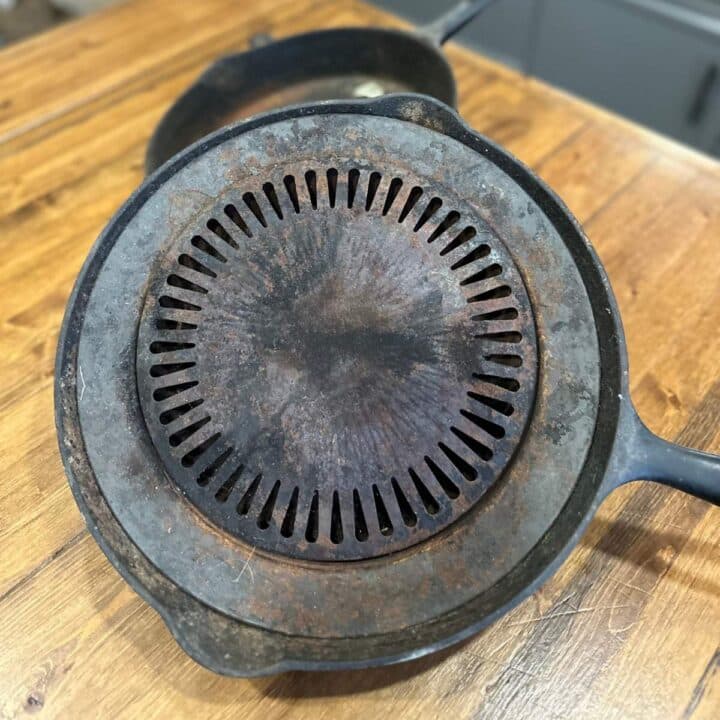
Today, you'll find various cast iron manufacturers on the market. In fact, our collection includes a large Camp Chef Dutch Oven and a few small Le Creuset pieces (they were gifts.)
However, when it comes to quality cast iron in North America, three names come to my mind: Griswold Manufacturing Company, Wagner Ware, and Lodge. Think of these manufacturers as the Ford, Chevy, and Dodge of vintage cast iron skillets. Each one offers a storied past that seasoned collectors celebrate.
Griswold Cast Iron Skillets were once kings of the kitchen from 1865 until their closure in 1957. Known for their smooth cooking surfaces and distinctive large logo—a mark to pay attention to if you're hunting down an antique piece—their cookware can be over 150 years old, dating to the late 1800s..
But don't let age fool you; these pans were made to last generations. Griswold enthusiasts will tell you they're worth every penny at auction, where rare finds have reached eye-watering price points.
Wagner Ware followed closely behind Griswold's success after its establishment in 1891. Collectors value pieces produced by this manufacturer for their quality craftsmanship and durability as much today as yesteryear's chefs did when first using them on early American stovetops. Even now, finding a well-kept Wagner skillet is considered quite the score among vintage iron aficionados.
Lodge Cast Iron Skillets remains a well-respected name for cast iron cookware. Since starting in 1896 (and still going strong), Lodge has honored traditional methods while embracing innovations like pre-seasoned cookware. This iconic brand appeals to enthusiasts at various price points, as well as newcomers looking to step into this enduring tradition.
Where to Find and Purchase Vintage Cast Iron Cookware
Over the years, we've picked up cast iron vintage pans from many places. They include the following:
- flea market
- yard sales/garage sales
- online classifieds
- farm auctions
- estate sales
Flea markets and yard sales are like a gold rush for those who love cast iron. With some digging, patience and luck, you might strike it rich with a vintage piece. Keep your eyes peeled for any sign of an old Lodge cast iron or a rare Wagner Ware skillet. These finds can make the early morning hunt worth every minute.
You may also find seasoned collectors parting with some of their collection—at flea markets or yard sales. Chatting with fellow enthusiasts could lead you to discover more than what meets the eye: tips on seasoning, maintaining, restoring, and caring for these durable relics so they continue cooking up history.
Remember, the thrill of cast iron hunting involves more than just getting your hands on antique skillets. It's also about snagging them at unbeatable prices. But make sure you know how to identify the real thing and do your research ahead of time.
Resources for Dating and Valuing Your Old Cookware
If you've got an antique cast iron skillet, figuring out its age can be like hitting a jackpot. But how do you tell if it's just old or a real antique? There's good news—there are tons of resources online to help with your cast iron collecting quest.
Books and Guides for Cast Iron Collecting Identification
Trying to figure out the age of your old Griswold skillet? Try a book.
Yes, old-fashioned books and guides can help you value your cast iron. Consult the "Blue Book" or "Red Book," packed with information on vintage cast iron. from Griswold to Wagner Ware. You'll find details about manufacturer logos, pattern numbers, and other dating clues that will let you date your cookware precisely.
Note: these books were last updated in the early 2000s. I think you'd get more up-to-date information online instead.
Besides print literature, websites such as Cast Iron Collector or Cast Iron Savannah have rich histories of Lodge Cast Iron Skillets.
Online Forums Groups for Enthusiasts
You're not alone in this hunt; a whole community is ready to share their love of cast iron with newcomers. Facebook groups and online forums (like the ones offered in Cast Iron Collector and Cast Iron Savannah) brim with seasoned collectors.
These collectors offer advice on everything cast iron. From identifying unmarked pans to pinpointing price points for those considered collectible gems, which might fetch anywhere upwards from what new ones cost through $8,000.
Local Experts
And don't forget your local historical society and museum. Curators and local history buffs may know how to help you date your cast iron piece. Area antique stores may also offer helpful information on your cast iron's age or time period.
Caring For & Restoring Your Antique Cookware
Antique cookware is like a link to the past, but proper care is necessary for that connection to rust away. Seasoning and maintaining your antique cast iron ensures it'll keep serving up history with every meal. It's not just about keeping vintage cast iron pans looking good but also preserving their functionality for generations.
Seasoning cast iron isn't hard, but it does take some know-how. Start by thoroughly cleaning your skillet to remove rust or old seasoning layers.
Then, bake on a thin layer of oil—like flaxseed or vegetable shortening—to create that classic non-stick surface. If you're into DIY solutions and love cast iron like I do, you might want to invest in high-quality conditioning products designed specifically for these timeless pieces.
And by the way, have you had a chance to check out Lehman's Hardware Store ? This is one of our favorite sites for quality, Amish-made homestead kitchen supplies, tools and more at great prices!
If restoring is more what you need because maybe you've stumbled upon an unmarked piece at a yard sale—you're in luck. You can bring even the most neglected skillets back to life with patience and elbow grease. Tackling everything from stubborn stains to pitted surfaces will ensure they perform beautifully again.
Care doesn't stop after restoration; regular use helps maintain these kitchen workhorses better than anything else. Just remember: no soap necessary—a hot water scrub after cooking should suffice—and always dry completely before storing away.
How Old is My Cast Iron Skillet FAQs
Got questions about your vintage cast iron? We have answers!
How old is my Lodge cast iron skillet?
To date your Lodge skillet, check the logo. Older ones have a different font or design; if it has three notches in the heat ring, you're looking at pre-1960s.
Are old cast iron skillets worth money?
Vintage skillets can be valuable. Rare finds might fetch thousands, while common antiques often compete with new prices.
What do letters on cast iron mean?
The letters and numbers typically refer to mold identifiers or size codes – crucial clues for collectors dating their cookware.
How do you age cast iron?
Aging involves inspecting markings, checking manufacturer's logos, and researching historical designs. It's like being a detective but for pans.
Old Cast Iron Skillets
So, you've journeyed through the world of cast iron and become an informed collector. How old is my cast iron skillet? Sometimes, you'll get a quick, easy answer using these tips. In other cases, you may need to dig a little deeper.
Study details like manufacturer logos and pattern numbers—clues leading to your pan's origins. Remember, the smoother the cooking surface, the older it likely is.
Cherish every heat ring and gatemark; they're not just features but timestamps from bygone eras. And let's not forget those pour spouts—small yet telling signs in dating your cookware.
Your kitchen relic isn't just about age—it's history held in your hands. With these insights, treasure hunting for vintage pieces has never been more thrilling or rewarding.
Like this post? Save it, share it, and read it!
